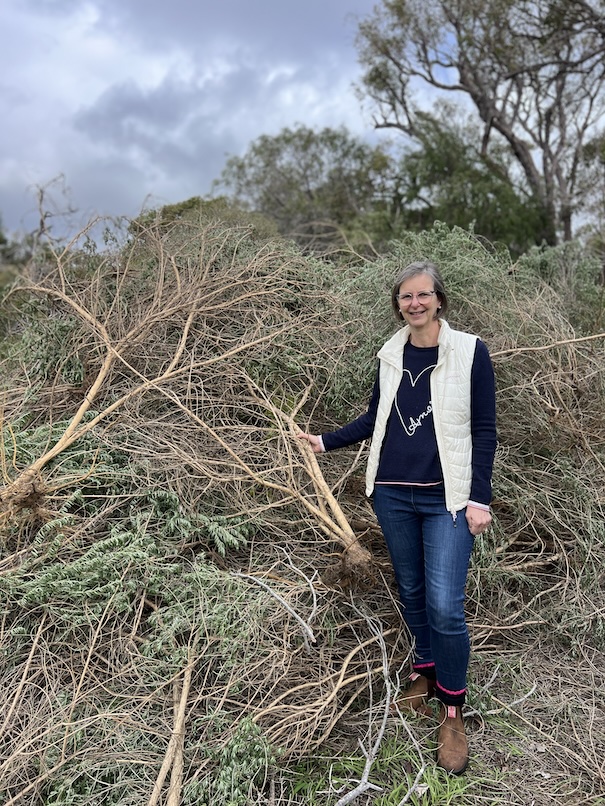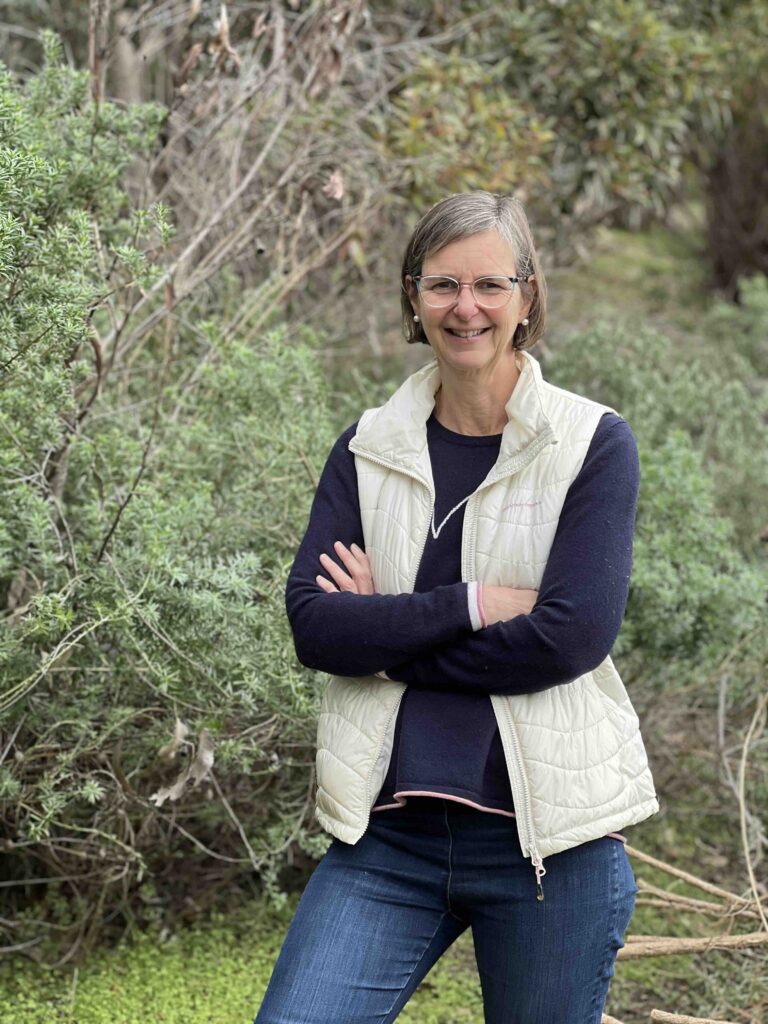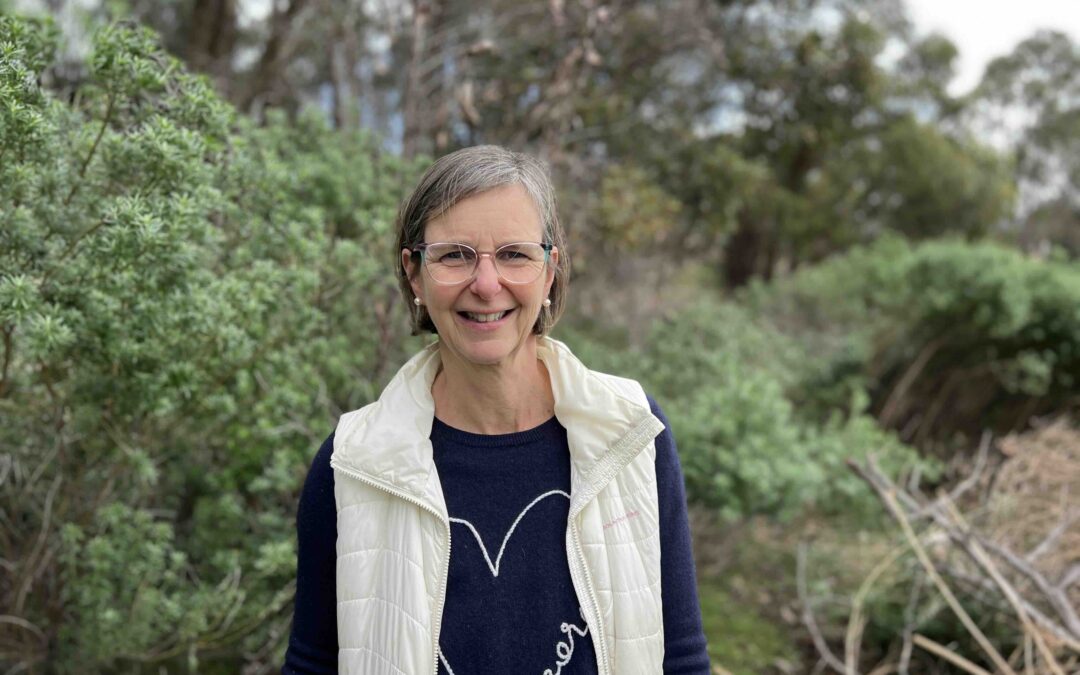Local resident and weed warrior Rachel Pearce is on a mission to clean up invasive broom from her property at Kilcarnup to stop it spreading into bushland. And she’s just one example of local landholders who taking the fight to invasive weed trees as part of Nature Conservation Margaret River Region’s Woody Weeds Campaign.
The golden-yellow flowers of broom might look pretty but this plant is a garden escapee and easily invades our precious bushland. It attracted Rachel’s attention when she noticed a large infestation on her property which backs onto the Leeuwin Naturaliste National Park and the tracks into popular coastal spot Joey’s Nose.
“My husband Richard and I have owned the property since just before the 2011 bushfire, but only became a full-time resident recently,” says Rachel. “We are very conscious of the responsibilities of owning a property close to the national park and first became aware of Nature Conservation Margaret River Region through their Arum Lily Blitz program. Through their help we have almost eradicated our arum lilies, so when we read in a recent newsletter how invasive broom can be, we contacted Nature Conservation for more information.”
Rachel works at the Carbon Farming Foundation in Margaret River, while Richard holds a number of roles including chair of Carbon Positive Australia and vice-chair of the Augusta Margaret River Clean Community Energy. They attended a Nature Conservation woody weeds workshop and brought sample of broom weed from their property. That’s when the couple learnt the infestation inherited from a neighbour was a major problem, particularly because it was spreading into the national park.

Rachel Pearce fighting invasive broom bush“I felt that I had a responsibility to manage the infestation and not impact other neighbours or the national park,” she says. “Now I also know that planting WA natives and more importantly local natives are best for the environment and increasing biodiversity on our property.”
Nature Conservation’s Woody Weeds Campaign coordinator Peta Lierich says our native invertebrates have not evolved with broom, so it doesn’t provide the essential habitat requirements that our native plants do. “It’s also a high fire risk thanks to its dense stem arrangement and dry material. We’re urging all landholders to remove broom and replace it with other native understorey species instead,” she says.
Peta says if you have a broom problem on your property, now is a great time to do some removal before it sets seed. If it’s a hedge, replace with local natives such as acacia cyclops, southern diplolaena, pink wood (beyeria viscosa), chorileana quercifolia, eutaxia myrtifolia or gastrolobium bilobum.
“Rachel received cost-share funding from Nature Conservation to carry out the weed removal. If you have a property near national park or in a catchment, you may also be eligible,” she says.

Rachel Pearce and her husband Richard are determined to help stop weeds spreading into the nearby national parkThere are two common broom species – French or Mentelliper broom (genista monspessulana) and flax-leaf broom (genista linifolia), both with generally yellow flowers and pea-like seed pods that are narrow, oblong and hairy. They:
- grow quickly
- can tolerate a wide range of conditions
- have explosive seed set, with pods that burst open in hot weather and eject seeds up to several metres
- establish rapidly after disturbance, such as fire or grazing
- but can also invade relatively undisturbed bushland areas
- are listed as “weeds of national significance”
You can report any broom or other weed species using our citizen science Fieldbook app or read more about environmental weeds and our Woody Weeds Campaign. Thanks to funding for this program from the WA Government’s State Natural Resource Management Program.

